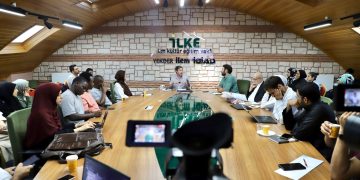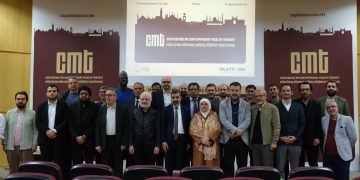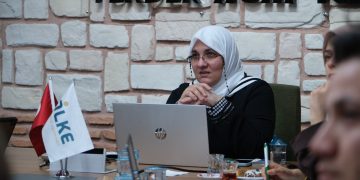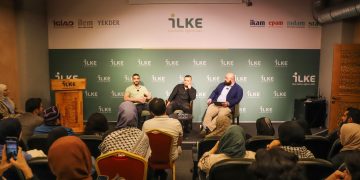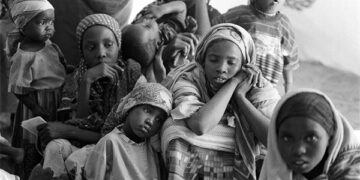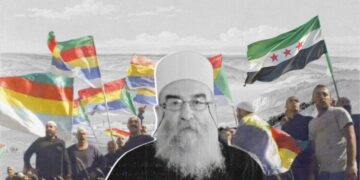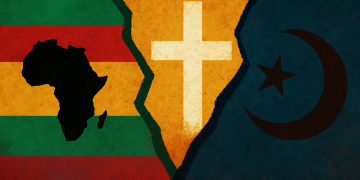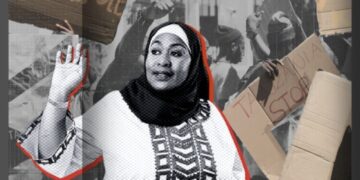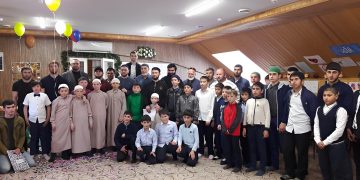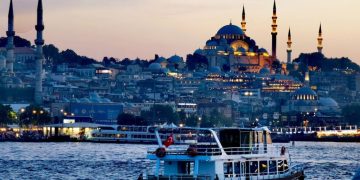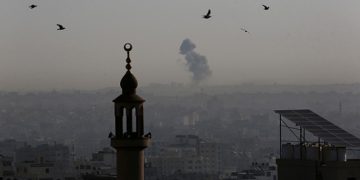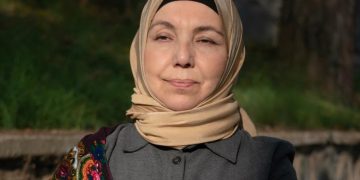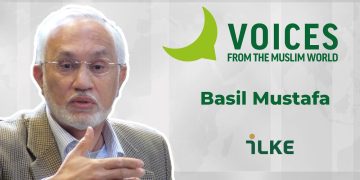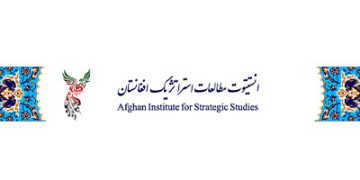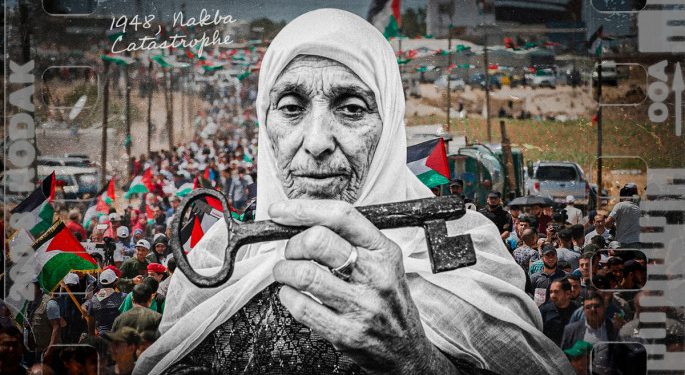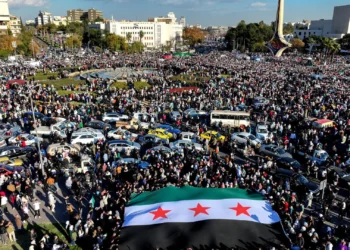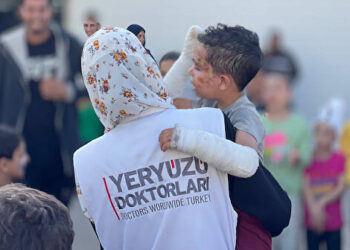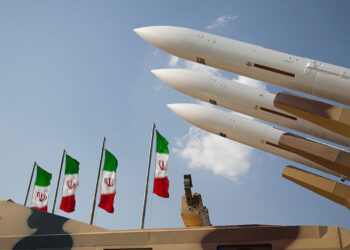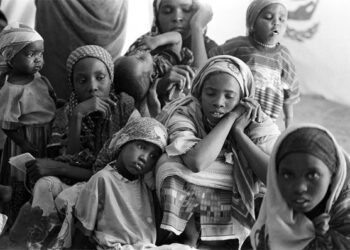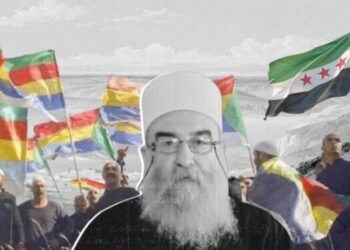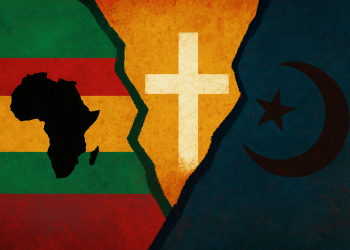Palestine is one of the regions that experiences the most intense and prolonged migrations in the world. Even before the establishment of Israel in 1948, acts of terrorism and massacres by Jewish militias for an extended period disrupted the peace of the local population in Palestine, forcing individuals to leave their homeland. After the establishment of Israel in 1948, the migration flows began to be officially recorded. Indeed, the day following the establishment of Israel, May 15, 1948, is symbolized as Nakba Day and marked the beginning of long-standing atrocities and human suffering.
On Nakba Day, commemorations are held to remember the Palestinians who lost their lives, were forced to migrate, and were exiled since 1948, ensuring that the historical tragedies are not forgotten. Even though Israeli forces declare that participants in demonstrations will be arrested and held legally accountable, Palestinians all around the world are committed to preserving the significance of this day. While Nakba is portrayed as a day of expressing anger and standing against injustice, it is also a day to keep the dream of returning to their homeland alive for Palestinians who were forcibly displaced and exiled. In other words, Nakba is not just a day of remembrance but an oath taken annually not to forget the historical event.
Nakba is not just a day of remembrance but an oath taken annually not to forget the historical event.
The Situation of Displaced Palestinians
The examination of all migration movements in Palestine after 1948 reveals that thousands of people have been displaced multiple times, and the migration routes extend to the United States and especially to Syria, Lebanon, and Jordan. According to recent data, the number of Palestinians forced to migrate to various parts of the world has exceeded six million. While migrants carry the hope of returning alongside them, the scenes that they will encounter when they return are daunting. According to the United Nations, the return of displaced Palestinians to Palestine and ensuring their safety in the country would entail a reconstruction process of approximately 20 years, posing a significant financial burden. Even if this happens, the question of who will bear the cost remains a major challenge.
In addition, research reveals that second and third-generations born to Palestinians, who migrated after 1948, have acquired citizenship in the countries they reside in and could not form legal ties with Palestine. Currently, there is a distinction globally between individuals of Palestinian origin and those holding Palestinian citizenship, highlighting another issue brought about by migration. The inability to transfer not only cultural heritage but also legal statuses from one generation to the next is a concerning aspect of assimilation policies that needs to be examined in itself.
Rather than focusing on Palestinians who have been uprooted from their country and forced to migrate, this article will address the individuals who remained in Palestine but were internally displaced and forced to live in other regions or camps in the country.
Migrants from Palestine to Palestine
When talking about Palestine, everyone is familiar with the famous map that illustrates the demographic structure of the territory starting from 1947 and onwards. It’s clear from this map that the Palestinian territories have been occupied, and people have been forced to live within a confined area. One of the first questions that comes to mind, even when one glances at it, is where the people living there and their descendants live today.
Despite living in different cities in Palestine and owning properties, individuals displaced from their homes after the occupation have had to migrate multiple times within Palestinian cities. Considering the shrinking borders over time because of the occupation, the settled formerly-migrated population was forced to migrate again with increasing Israeli expansion. The repeated displacement of individuals within their own homeland has no explicit definition in the literature. Indeed, the essential principle for individuals is to benefit from the protection of the country to which they are bound as citizens. If a person cannot benefit from this protection due to the conditions specified in the Convention, they can apply for international protection and acquire refugee status. In the 1951 Convention relating to the Status of Refugees, the relevant article states: “Decisions of non-eligibility taken by the International Refugee Organization during the period of its activities shall not prevent the status of refugee being accorded to persons who fulfill the conditions of paragraph 2 of this section: As a result of events occurring before 1 January 1951 and owing to well-founded fear of being persecuted for reasons of race, religion, nationality, membership of a particular social group or political opinion, is outside the country of his nationality and is unable or, owing to such fear, is unwilling to avail himself of the protection of that country; or who, not having a nationality and being outside the country of his former habitual residence as a result of such events, is unable or, owing to such fear, is unwilling to return to it.
Despite living in different cities in Palestine and owning properties, individuals displaced from their homes after the occupation have had to migrate multiple times within Palestinian cities.
In this context, it is evident that Palestinians who are forced to migrate within their own country do not fit this definition. Notably, for this population mentioned as “displaced persons” in UN resolutions, the United Nations Relief and Works Agency for Palestine Refugees in the Near East (UNRWA) was established after 1948 as a protective agency.” In this regard, it is evident that Palestinians who have been forced to migrate within their own country do not fit this definition. Notably, for this population mentioned as “displaced persons” in UN resolutions, The United Nations Relief and Works Agency for Palestine Refugees in the Near East (UNRWA) was established after 1948 as a guardian agency.
UNRWA and the Current Situation
UNRWA is one of the largest United Nations programs in scope and capacity. Although it was established in 1949 as a temporary agency, it has maintained its active presence and authority since the crisis in the region persists.
UNRWA defines individuals whose normal place of residence was in Mandate Palestine during the period from 1 June 1946 to 15 May 1948 and who migrated during that period as “Palestinian refugees.” However, in the general literature, those falling under the UNRWA definition can only find a status as “displaced persons.” Therefore, while UNRWA seeks to address the situation of Palestinian refugees, the legal status it provides both attempts to resolve their status and complicates the matter further from an international law perspective. Furthermore, UNRWA not only deals with the legal status issues of Palestinians but, unlike the United Nations High Commissioner for Refugees, also operates as a direct service provider in the region. It aims to provide comprehensive solutions for the basic needs of Palestinian refugees, such as security, shelter, and food, as well as status problems. However, the first step following the events of 1949 should have been the punishment of those responsible for the aggression. Instead, the United Nations quickly established a works agency and focused on finding solutions for displaced Palestinians.
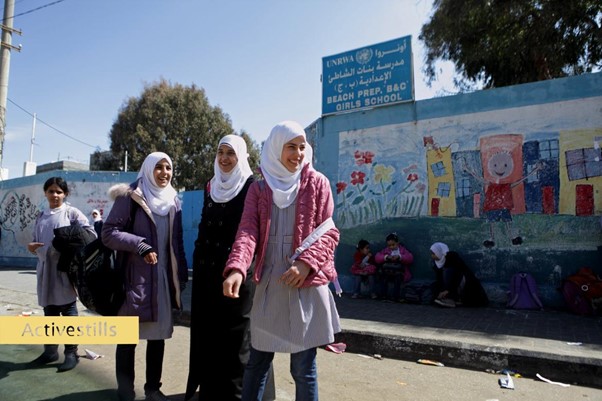
Young school girls at the UNRWA run all-girls school in Ash Shati’ refugee camp, February 25, 2012
Source: Anne Paq / Activestills
At the current stage, interpreting this effort as a “well-intentioned humanitarian aid effort” doesn’t seem quite plausible. Considering that the systematization of the problem is one of the major obstacles to finding a solution; the effort of providing Palestinians who have been deprived of all their rights in their homeland with services such as food, shelter, education, and healthcare, ultimately reproduces them as people forced to live in camps in the long run. Unfortunately, UNRWA that provides health services in various areas, including many refugee camps in Palestine, has not been successful in protecting civilians.
Unfortunately, UNRWA that provides health services in various areas, including many refugee camps in Palestine, has not been successful in protecting civilians.
On December 8, 2023, UNRWA Commissioner Philippe Lazzarini openly stated in a letter to the UN General Assembly that the humanitarian situation in Gaza is dire and that UNRWA is barely operating. Of course, he did not shy away from mentioning that the attack carried out by Hamas on October 7 had led to all these events.
Finally, the crucial point I want to emphasize is that people in Palestine who have endured such oppression in their own homeland once had a homeland and rights and that they are the rightful owners of these lands. However, at this point, institutions that cannot even meet the basic needs of Palestinians or ensure the security of civilians only perceive them as mere statistics. What is completely ignored today is that these people, who do not even have a legal status, whose citizenship is not recognized, who cannot travel, own property, or work, and whose entire lives are at the hands of Israel, are “human beings” just like the rest of the world. What hurts me the most is that Palestinians are expressed as numbers and denied the use of anything inherited from their ancestors. Yet, I wish to proclaim to the world that they are not just numbers; they are not merely defined by legal status – they are, like everyone else, “human beings.”
[1] Latest information as of December 6, 2023, posted on UNRWA’s official website on December 8, 2023, the day of writing: https://bit.ly/3H9YMgB

